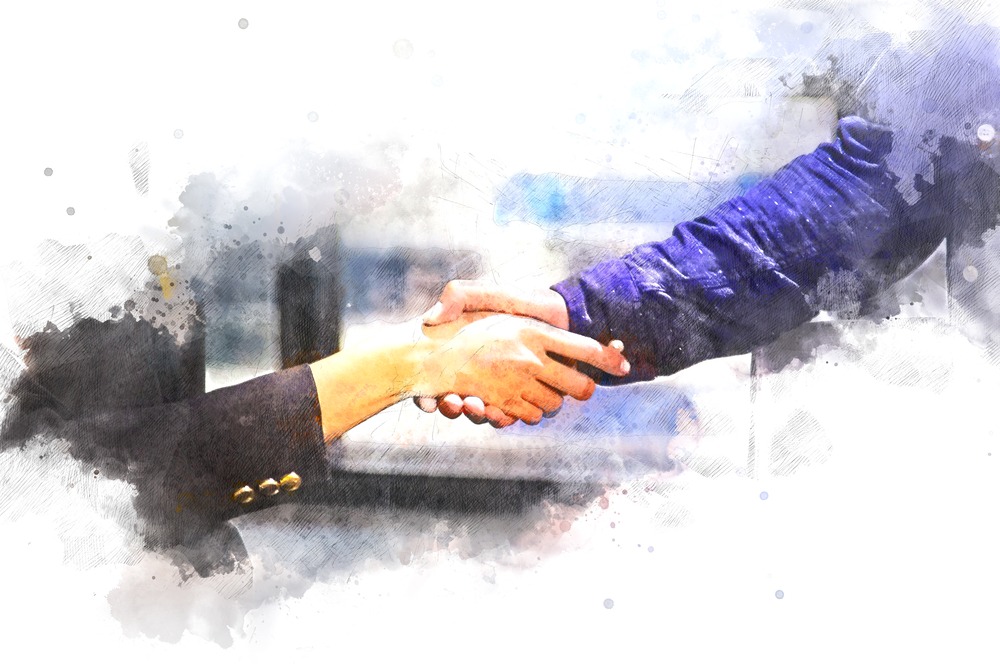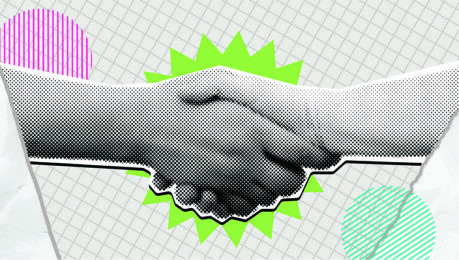Have the rules for business networking changed post-Covid?

As the frequency of business events continues to expand, many meeting professionals may find themselves in an uncertain social limbo navigating what is now acceptable to do at a cocktail party. To handshake, or not to handshake? How soon is too soon to reach out after an event ends?
To help navigate this tricky terrain, Smart Meetings chatted with Jacqueline Whitmore, an international etiquette expert and author on etiquette within the meetings industry. Spoiler alert: business cards and hand shakes are not going away.
What are the current expectations of a dress code for business meetings?
Jacqueline Whitmore: Business meetings now tend to be a bit more casual—smart casual instead of suits and ties, but people are still dressing professionally.
How are people greeting each other?
JW: Hand shaking is coming back. And for those who don’t want to shake hands, they can simply extend an elbow, or a fist and the other person should just follow suit. But I have definitely seen handshakes coming back.
What is the appropriate way to exchange information?
JW: The old-fashioned way still works with business cards. I still see a lot of people giving out business cards and I don’t think that will ever go away.
But I also see people sharing their LinkedIn QR code. That’s a great way to connect with somebody and get all their details and connect with them on LinkedIn. Some people offer electronic cards, but I think most popular is still the old-fashioned business card.
If you’re at an event and you see someone you haven’t seen in a while, and maybe don’t remember their name, what is the best course for re-introducing yourself?
JW: Name tags are a blessing, right? But let’s say that you don’t necessarily remember talking to them. And so, one way would be to say, ‘Remind me where we met or when we last spoke?’ and just be honest. Don’t ever say “You don’t remember me, do you?” Instead, say something like, “We were we were on the XYZ team together. Gently remind people because we’ve kind of been out of commission for a while.”
Now that we’re meeting in person, how should we be giving life updates?
JW: It depends on who the person is, how long you’ve known them and how well you know them. And if I haven’t seen a friend or a colleague in several years, I might give them a quick catch up. I might say let’s grab a coffee and I might share more about my life with that person versus someone whom I just met. The answer would be it depends on your relationship with the person.
How would one go about excusing themselves from one conversation to speak to another person across the room?
JW: You would just say to the person: “Will you please excuse me? I see someone, but I would love to continue this conversation. Why don’t we sit together at dinner? Or can we schedule a time that it’s more convenient?” You just have to say something instead of walking away and leaving them in the dark.
How long should you typically wait to reach out to someone if you exchanged information?
JW: Better sooner than later. Let’s say that the meeting is three days, and you go home and sit down with all these business cards. I would at the very least connect with them on LinkedIn. And after that, send them a DM or a nice e-mail saying how great it was to meet them and here’s the information you requested so it could be a few days after the meeting. If you can do it within a week, that would be ideal.
If someone doesn’t get back to you, is it okay to call them?
JW: If somebody requests information and they don’t get back to you, then that’s your cue to take it a step further and n maybe pick up the phone. Absolutely. You definitely don’t want to be a pest. But that’s why social media is so crucial because if you can connect with them, then you can send them an internal email, and that’s less invasive than a phone call.
Is it acceptable to reach out via snail mail such as with a postcard?
JW: A nice note is always, always acceptable. If you take the time to write a nice note on your personal stationery, put a stamp on it, go to the post office and mail it, it shows that you’ve taken the time and made some effort. That is the most ideal way to leave a lasting impression.
How long should a normal Zoom meeting be?
JW: A half hour is a typical Zoom meeting. Any more than that, then it becomes a more extensive meeting and any less could probably be done over the phone.
Read More: How to Zoom Your Events Like a Pro
Is it important to leave your camera on for a Zoom meeting?
JW: It definitely matters. I think you should treat the Zoom meeting as you would an in-person meeting.
Is professional attire important for virtual meetings?
JW: I wouldn’t say you have to put on a suit and tie. I would definitely suggest at least the combing of hair and looking presentable. If I’m going to have a potential client, I’m not going to show up in a gym clothes with my hair in a ponytail. I am going to shower, put on make-up and comb my hair because I want to make a good first impression.
Should people attending online meetings utilize the green screen feature?
JW: Some people are very limited by their background and that’s why greenscreens and background blurs were invented. It works as long as it’s not distracting. I’m not a big fan of green screens because I think that when you move your hands, it doesn’t transmit very well. Ideally, you want to have a nice background or at least something that is uncluttered and clean.
If you’re in a meeting and things aren’t going great should you verbally apologize?
JW: Women in general say, “I’m sorry,” way too much. I’ll just get that out of the way. If you truly are sorry for doing something wrong, then you apologize, but I don’t think there’s any reason for you to go on and say, “I’m sorry, I’m sorry, I’m sorry,” because, we’re human beings. We all have our strengths.
We all have things that we’re working on. And I don’t think you should apologize as long as you’re trying to be professional, and you’re trying to do a good job and people are very understanding of that. You just have to be yourself.
Any final etiquette tips for meeting professionals?
JW: Put people first and technology second. Oftentimes, when we’re in meetings, we’re more prone to look at our technology, we’re more prone to check our email, we’re more prone to check our social media. And when we’re trying to have a conversation with someone it’s really important to put that technology aside, turn the phone off or put it on Do Not Disturb. Give the person you’re meeting with your undivided attention.





